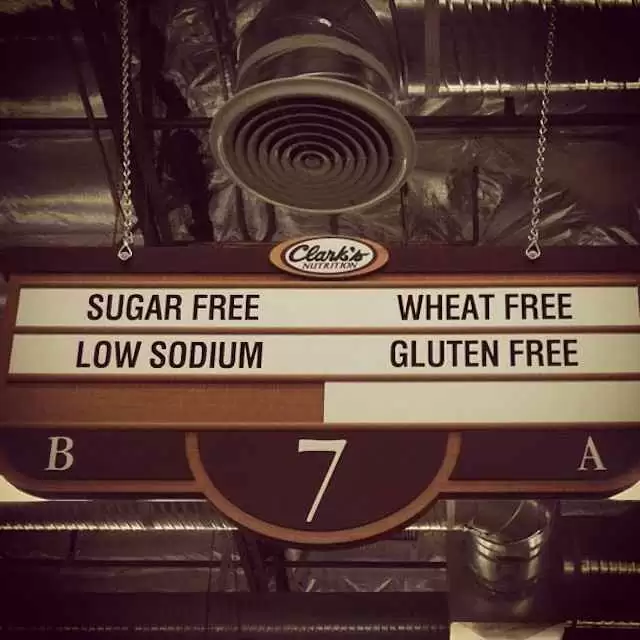Celiac.com 11/27/2025 - The explosion of gluten-free products on grocery store shelves has made life easier for millions of people with celiac disease and gluten sensitivity. From gluten-free bread and pasta to cookies, crackers, and frozen meals, there's no shortage of options. Yet not all gluten-free foods are created equal. While these products are free of wheat, barley, and rye, many are highly processed and packed with sugar, refined starches, and additives that can harm your health over time. This article takes a closer look at how "gluten-free junk food" became so common, why it matters, and how you can create a balanced gluten-free diet that actually supports wellness rather than undermining it.
The Rise of Gluten-Free Processed Foods
The gluten-free food market has grown into a multi-billion-dollar industry over the past decade. Initially, this was good news for people with celiac disease, who previously struggled to find safe and convenient foods. However, as demand increased, food companies rushed to produce gluten-free versions of everything—from doughnuts to pizza rolls. In doing so, many relied on cheap fillers and industrial processing to replicate the taste and texture of gluten-containing products.
Celiac.com Sponsor (A12):
Today, many gluten-free packaged foods are far removed from the fresh, whole ingredients that form the foundation of a healthy diet. They may technically meet the gluten-free standard, but nutritionally, they can resemble junk food. As a result, people who switch to a gluten-free lifestyle sometimes end up eating more sugar, unhealthy fats, and additives than before.
What's Inside Gluten-Free Junk Food?
When manufacturers remove gluten, they often need to add other ingredients to recreate the structure and mouthfeel that gluten provides. The result is a mix of refined starches and stabilizers that make baked goods look and taste familiar—but at a nutritional cost.
- Refined flours and starches: Many gluten-free breads, crackers, and pastries rely on rice flour, potato starch, tapioca starch, or corn flour. These are low in fiber and nutrients but high in simple carbohydrates that can spike blood sugar.
- Added sugars: Sugar often compensates for flavor loss when wheat is removed. Some gluten-free snacks contain more sugar than their traditional counterparts.
- Unhealthy fats: To improve texture and shelf life, manufacturers sometimes use hydrogenated oils or excess palm oil, increasing the saturated fat content.
- Salt and additives: Preservatives, gums, emulsifiers, and excess sodium are common in gluten-free processed foods. While these make products stable and visually appealing, they can burden the digestive and immune systems.
For people with celiac disease or gluten sensitivity, eating these foods regularly can lead to new health problems. Processed gluten-free foods may not trigger gluten reactions, but they can still contribute to fatigue, blood sugar swings, digestive distress, and inflammation.
Why a Gluten-Free Label Doesn't Equal Healthy
It's easy to assume that "gluten-free" means "healthier." Marketers often reinforce this belief with labels featuring green packaging, natural imagery, or words like "pure" and "clean." But gluten-free foods are not automatically nutritious—they are simply free of gluten.
Consider this comparison: a bowl of fresh fruit, vegetables, lean protein, and brown rice is naturally gluten-free and packed with vitamins, minerals, and fiber. Meanwhile, a gluten-free cookie or muffin might be loaded with refined starches and sugar, offering very little nutritional value. Both are gluten-free, but only one truly supports long-term health.
This confusion is especially risky for those newly diagnosed with celiac disease. After years of feeling unwell, many patients celebrate by indulging in every gluten-free packaged option they can find. While that's understandable, relying too heavily on these products can delay full recovery and lead to weight gain, digestive upset, and nutrient deficiencies.
The Sugar Trap in Gluten-Free Diets
Sugar plays a central role in the rise of gluten-free junk food. To make up for flavor and texture loss, food companies often add extra sugar to everything from bread to cereal. This can create a cycle of cravings and energy crashes, especially for those with gluten sensitivity who already experience blood sugar instability.
Research has shown that many gluten-free packaged foods contain up to 30 percent more sugar than their conventional counterparts. Over time, this extra sugar can raise the risk of metabolic problems like insulin resistance, weight gain, and chronic inflammation. For people recovering from intestinal damage caused by celiac disease, high-sugar foods can also slow healing by feeding harmful gut bacteria and promoting yeast overgrowth.
Hidden Nutrient Deficiencies
Many gluten-free processed foods are low in fiber, iron, folate, and B vitamins—nutrients often added to wheat-based flours. This means people who rely heavily on gluten-free convenience foods may not get enough essential nutrients. In celiac disease, where nutrient absorption is already compromised, this can lead to lingering fatigue, anemia, and other health issues even after gluten has been eliminated.
Choosing naturally nutrient-rich gluten-free foods, such as quinoa, buckwheat, lentils, and leafy greens, can help prevent these deficiencies. Whole foods also support gut health by providing the fiber and phytonutrients needed for a balanced microbiome.
Building a Healthier Gluten-Free Plate
Going gluten-free doesn't have to mean eating poorly. The healthiest gluten-free diets emphasize fresh, whole foods over packaged convenience items. Here are some practical tips to help build a balanced gluten-free diet:
- Focus on naturally gluten-free staples: Fruits, vegetables, beans, nuts, seeds, eggs, and unprocessed meats are all naturally gluten-free and full of nutrients.
- Choose whole grains: Options like brown rice, quinoa, millet, amaranth, teff, and certified gluten-free oats provide fiber and steady energy.
- Cook more at home: Preparing your own meals reduces the risk of contamination and gives you full control over ingredients.
- Read labels carefully: Look beyond the gluten-free logo—check for added sugars, refined starches, and unhealthy oils.
- Balance treats with nourishment: Enjoy gluten-free snacks or desserts occasionally, but make sure most of your diet is built around fresh, whole foods.
What This Means for People with Celiac Disease and Gluten Sensitivity
For people with celiac disease, healing the gut requires more than simply avoiding gluten—it also means eating foods that restore strength, immunity, and balance. Ultra-processed gluten-free foods may meet safety standards, but they can still fuel inflammation, disrupt digestion, and interfere with recovery. Those with non-celiac gluten sensitivity may find that cutting out gluten-free processed foods improves their symptoms even more than eliminating gluten itself.
The key is to remember that "gluten-free" is not the same as "healthy." A steady diet of gluten-free chips, cookies, and bread can lead to sluggishness, weight gain, and gut imbalance. By focusing on real food—fresh produce, lean proteins, and whole gluten-free grains—you can rebuild your health from the inside out.
Practical Steps to Reclaim Your Gluten-Free Health
If you're struggling with fatigue or digestive issues despite eating gluten-free, it may be time to reevaluate what's on your plate. Here are steps to take:
- Track your diet: Keep a food diary for a week. You may be surprised at how many packaged gluten-free foods appear in your meals.
- Gradually reduce processed foods: Replace one processed item per day with a whole-food alternative.
- Hydrate and move: Drinking water and staying active helps your body recover from inflammation and balance blood sugar.
- Work with a nutritionist: A registered dietitian who specializes in celiac disease can help you rebuild a nourishing, gluten-free diet that meets your needs.
Conclusion: Rethinking "Gluten-Free" as a Lifestyle
The gluten-free movement has improved awareness of celiac disease and opened doors for millions of people who once felt excluded from dining and shopping. Yet it also introduced a wave of ultra-processed "gluten-free junk food" that can make people feel worse instead of better. The goal of a gluten-free diet should not be to replace every gluten-containing food with a processed version, but to nourish the body with wholesome, naturally gluten-free foods.
By being mindful of what's in your gluten-free products—and choosing real, unprocessed ingredients most of the time—you can enjoy the benefits of a gluten-free lifestyle without falling into the trap of empty calories and poor nutrition. Whether you're living with celiac disease, gluten sensitivity, or simply trying to eat better, the message is the same: gluten-free should mean healthy, not just convenient.










Recommended Comments
There are no comments to display.
Create an account or sign in to comment
You need to be a member in order to leave a comment
Create an account
Sign up for a new account in our community. It's easy!
Register a new accountSign in
Already have an account? Sign in here.
Sign In Now